

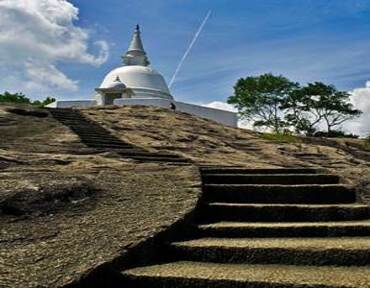
description not found
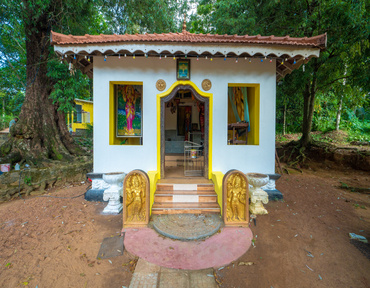
description not found
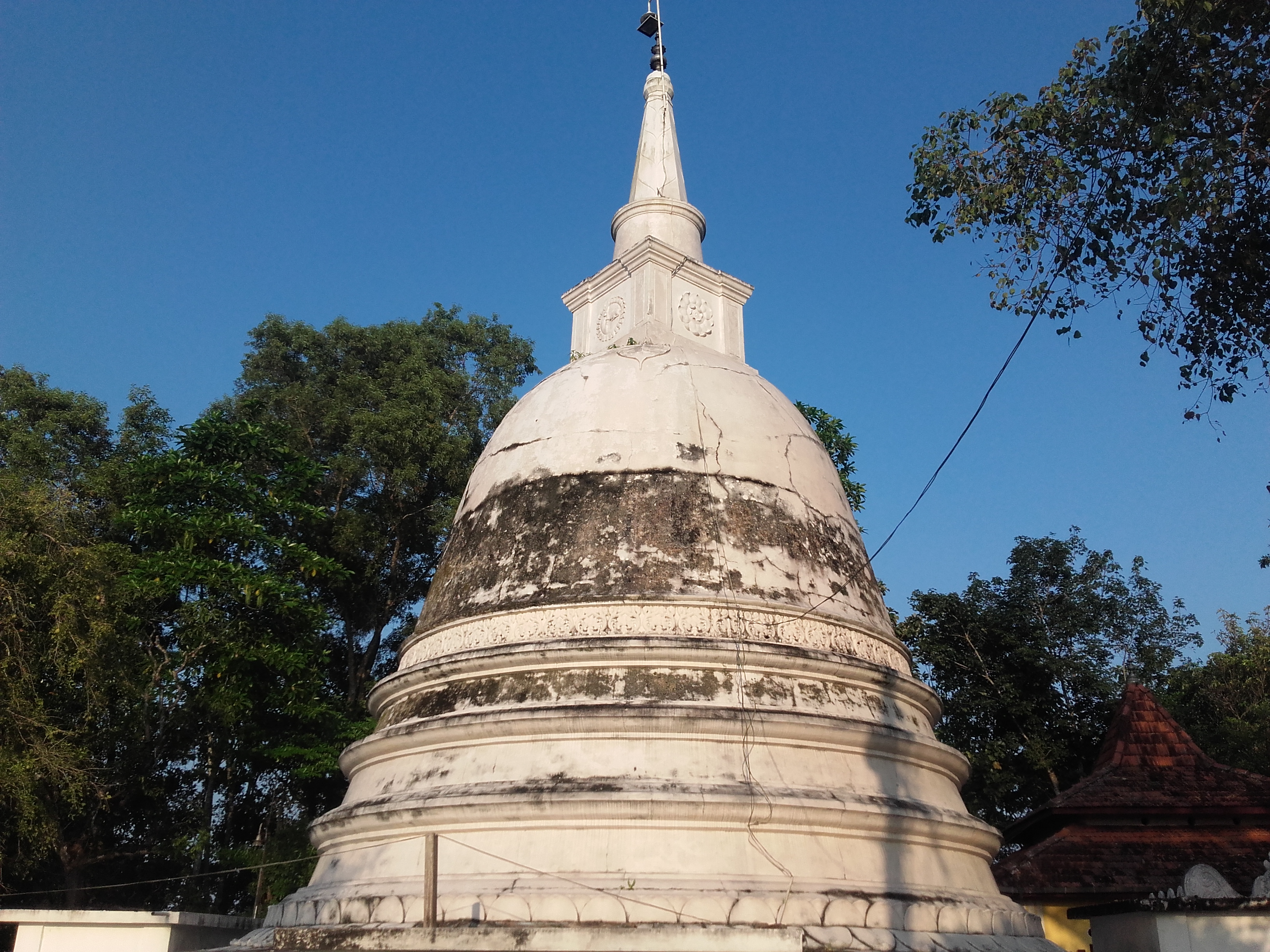
Asgiriya Raja Maha Vihara (අස්ගිරිය රජ මහා විහාරය) is an ancient cave temple situated in the Gampaha District, Sri Lanka. The temple is located on top of a hillock along the Gampaha - Minuwangoda road, just away from Gampaha town. It has been formally recognized by the government as an archaeological site in Sri Lanka. Asgiriya's name is said to have originated after the loss of Prince Uttiya's horse (brother of King Kelanitissa) in this area. Its history is believed to date back to the reign of King Valagamba (89-77 BC). King Valagamba, who fled from Anuradhapura after invasions from South India, sought refuge in this historical place. The cave temple, constructed with wattle and daub, features drip ledges. Inside the image house, there's a Samadhi Buddha statue from the Kandyan period. The canopy of the cave is adorned with lotus flowers and other floral designs. A footprint of Buddha is etched into the rock surface, and a stupa stands nearby.
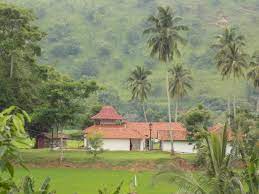
Ganegoda Katharagama Dewalaya is a significant historical site situated between the Mahaweli River and the Nillambe Stream in the Gampaha District, Sri Lanka. The Devalaya was built during the Gampola era and is associated with the Kandyan period. It stands amidst a paddy field on a beautiful plateau. Dikgeya - The outer chamber, Antharalaya - The inner chamber, Garbha Vimanaya - The sanctum, Atuwa - The kitchen, Palle Devalaya - A subsidiary shrine are the composite structure of the Dewalaya. It's believed that King Kirthi Sri Rajasinghe offered his golden head ornament and jewelry box to this temple. The temple holds cultural and religious importance, and its serene surroundings make it a peaceful place to visit. Legends connect it to significant events, including a vow taken by King Rajasinghe II before the Battle of Gannoruwa against the Portuguese invaders.
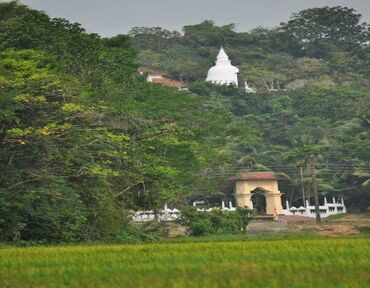
description not found
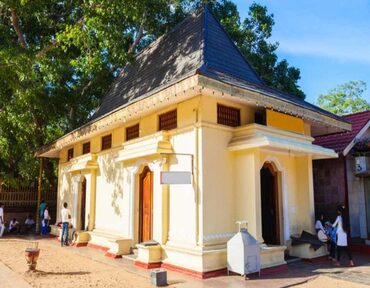
description not found
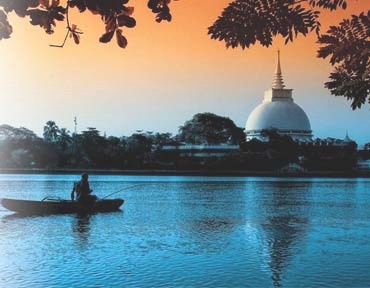
Kaluthara Bodhiya Is a Bodhi Tree (Sacred Fig)Located In Kaluthara Is Situated On The Galle Colombo Main Road By The SideOf Kalu River Just South To THE kaluthara City .It Is Believed To Be One of The 32 Saplings Of The Jaya Sri Lanka.According To Ancient Chronicle Sinhala Bodhiwamsa ,32 Saplings Of Sacred Figs Which Were Sprouted From Jaya siri Maha Bodhi Were Planted In Various Parts Of The Country As Instructed by arahat mahinda thera further the chronicle statethat this bodhi tree existed Intact Till The 15th century ad.the buddhist temple kalutara viharaya and a modern stup kaluthara chathiya are located in close proximity to this sacred fig one of the most venerated religious place in sri lanka hundreds of buddhists visit this religious place daily.
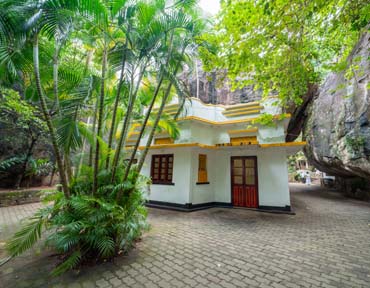
According to Brahmi cave inscriptions found in Warana Raja Maha Vihara and Pilikutthuwa Raja Maha Vihara, those are temples located near to Maligatenna, it can be assumed that this vihara may also have been on abode of Buddhist monks
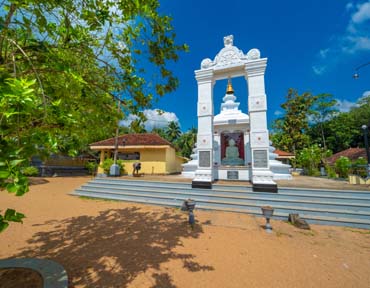
Attanagalla Rajamaha Viharaya is one of the most famous ancient royal temples in Sri Lanka. It is unique because it is the only ancient temple historically recognized as the place where a Bodhisattva (a future Buddha) fulfilled his Dana Paramita (one of the ten perfections to be completed by a Bodhisattva to become a Buddha). He sacrificed his life by giving his head in gratitude for a favor he received from a poor and ordinary countryman
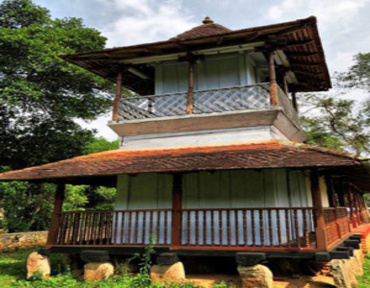
description not found
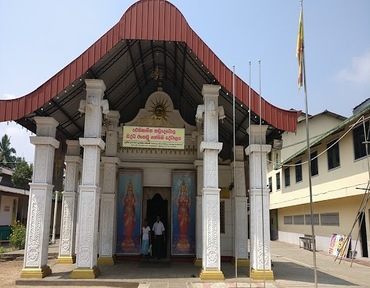
Belonging to the Colombo district in the broader of the Gampaha, the Kaduwela Rankadu Pattini Dewalaya wields many auspicious wonders. As a sacred ground for Buddhism and Hinduism the Dewalaya holds many historical significance and cultural, heritage and authenticity of the Sri Lankans. The most eye-catching events of the dewalaya is the annual procession commonly known as the 'Perahera'; an auspicious event that the people of Sri Lanka looking forward to every year on June fulmoon day known as the Poson Full Moon Pooya Day, the day when the Buddhism first introduced to Sri Lanka officially over two millenniums. The day filled with traditional dancing, arts and crafts, dramas, rituals, exhibitions and many more. Uniqueness * The Poson Full Moon Pooya Day Procession * The Gonpita Perahera - and unique procession in Sri Lanka even for locals which included cattle instead of the tuskers.
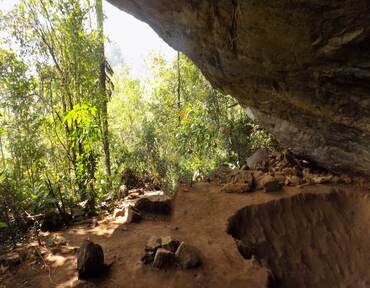
When the history is not recorded in words but as the residuals, where remaining hiding in plain sight but showcase a proudness of many generations they are called ruins. Such ruins are being unearthed through archaeology, the place is known as an archaeological site. Sri Lanka is a treasure trove of such destinations including the Alawala Caves where ruins of proud generations remains and being unearthed. Standing proudly in the Attanagalla Region of Gampaha district the Alawala Caves is a place predominantly a cave temple famously known as Alawala Raja Maha Viharaya. The caves are a treasure trove of proof of pre historical technologies indicating in their skeletons of the potshards, human bones, bone tools, seeds and many of archaeologically invaluable ruins. The postgraduate Institute of Archaeology of the University of Kelaniya had been excavating in the Alawala Portugal Len Raja Maha Viharaya. Uniqueness * The caves that have been open to the public * Prehistoric ruins and proof of ancient civilization.
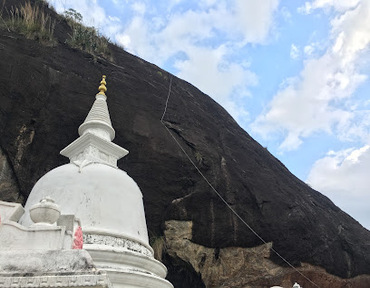
description not found
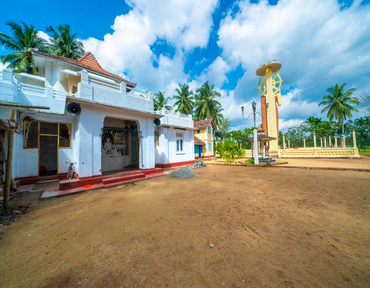
description not found
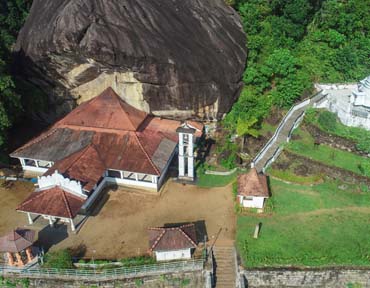
description not found
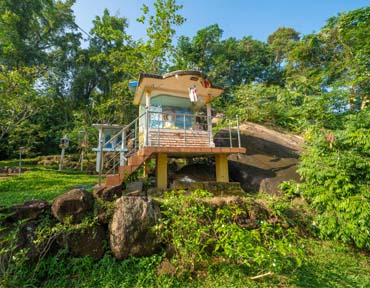
description not found
.jpg)
description not found
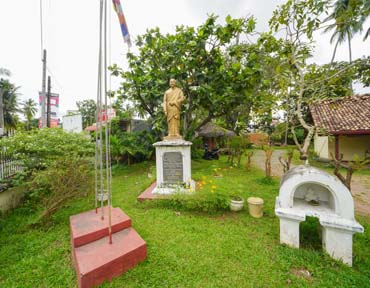
The Brahmachari Walisinghe Harischandra Museum is located in Negombo, Western Province, Sri Lanka. It is named after Walisinghe Harischandra (1876-1913), a Buddhist revivalist, social reformer, historian, and author. The museum was established in 1996 and is housed in Harischandra's former residence, Mahagedara, which is managed by the Walisinghe Hariswandra Cultural Centre. Initially managed by the Department of Museums, the museum contains furniture, books, diaries, and personal effects used by Harischandra, along with local objects and artifacts from his era.
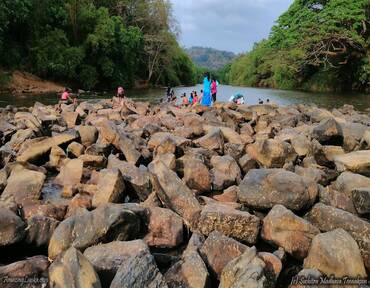
description not found
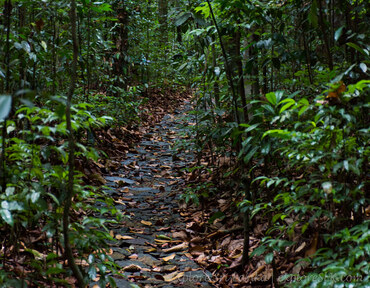
Horagolla Rainforest in Sri Lanka is a great spot for birdwatching. It’s known for its rich biodiversity, including over 40 bird species such as parakeets, black-crested bulbul, barbets, and the Sri Lanka grey hornbill. The rainforest also hosts mammals like the fishing cat, Sri Lankan spotted chevrotain, and golden jackal. Located about 40 kilometers from Colombo, it’s a wonderful place to explore nature and observe wildlife.
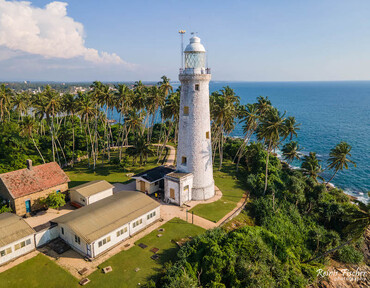
Barberyn Lighthouse (also known as Beruwala Lighthouse) is located on Barberyn Island. Barberyn Island a 3.25 ha (8.0 acres) island situated 0.8 km (0.50 mi) offshore from the town of Beruwala on the south-west coast of Sri Lanka, 56 km (35 mi) south of Colombo. The lighthouse is a 34 m (112 ft) high round white conical granite tower. The lighthouse was completed in November 1889 and operated by the Imperial Lighthouse Service. In 1969 it was upgraded with the replacement of the old dioptric apparatus (produced by Chance Brothers) and with a pedestal rotating beacon (Pharos Marine PRB-21 sealed beam optic and drive pedestal). It was further modernised in 2000, with the introduction of a Differential Global Positioning System (DGPS) and is computer linked to the other major lighthouses around the country. The Barberyn Lighthouse is one of the four international lighthouses in Sri Lanka
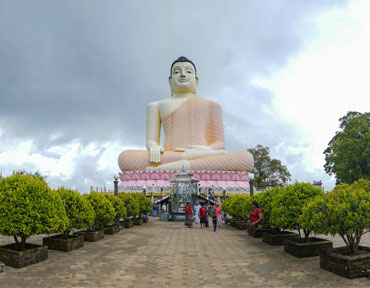
Kande Vihara, also known as the Mountain Temple, is a significant Buddhist temple situated in the Kalutara District of Sri Lanka. It stands atop a hill near Aluthgama town. Founded in 1734 by Karapagala Dewamitta Thero, the temple has undergone renovations over the years, becoming a major Buddhist shrine in the country. Notably, it houses a 48-meter-tall Samadhi Buddha statue, one of the tallest sitting Buddha statues globally. The temple complex includes a stupa, Bodhi tree, relic chamber, image house, and other devalas. The ancient Bodhi tree here is believed to be over 300 years old.
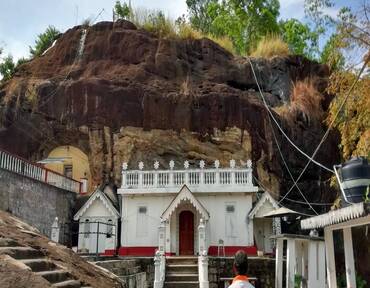
Lenawara Rajamaha Viharaya is an important heritage site in the Kalutara district of Sri Lanka. It holds prominence in terms of cultural and religious history. Built during the reign of King Parakramabahu VI, this temple is a must-visit if you're interested in learning about the deep-rooted cultures of the island. The Lenawara Ancient Temple is situated just outside Horana Town, approximately 5 km along the Anguruwatota Road commencing from the Raigama Junction on the Panadura-Horana Road. The narrow Anguruwatota road, with its canopy of shade trees, leads to the temple.
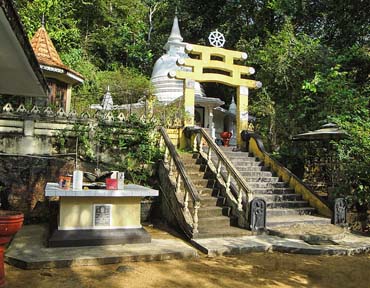
The religious history of Sri Lanka is the largest part of Sri Lankan history that deeply embedded into its culture and shaping the traditions norms and giving the inhabitants of the country the well founded calmness, serenity, the proudness and the sense of belonging in the modern era. Illustrating the spiritual aspects, showcasing the physical evidences of religions and their history is a intrinsic part of a highly unique heritage. And monasteries falls into such proud heritage where spiritual aspects of religions transcends the entire civilizations, in thus giving the monastery be the living proof of such tranquil heritage where spirituality and self actualization as well as personal enlightenment were not mere dreams. Transcending the natural world to accommodate the needs of humanity still while preserving the sustainability and maintaining well balanced natural adoption into a peaceful eco-system as well as still walking on the path of seeking the inner peace, the Monasteries are the best ever integration between the humanity inside a natural world, in architectural designs or otherwise. Madakada monastery or Madakada Aaranya Senasanaya is one of the best interconnected path of humanity and nature. Madakada Aaranya not only illustrating the tranquility of Buddhism but also welcomes the humanity into its embrace with open arms disregarding the barriers of humanity that device them from each other and the nature itself. Under the vibrant greenery of the forest safely tucked away and opened to anyone and everyone a silent gateway to illustrate the path to transcends, the Madakada Monasteries is a true relic of the Buddhist civilizations giving away the roots of spiritual tranquility. Nestle inside the forest at Ingiriya of Kaluthara District the Madakada Monastery is also famous for its name as Nachchimale Manastry, housing the ideal background with forest reserve, the rhythmic stream of water flow of a nearby branch cannel named Nambapana Ala, or also known as Nachchimale Dola, the gently swaying leaves of the trees and hosting over playful wind current has given the Ambiance to this area with its huge Flora and fauna seeking refuge, is one of the greatest destination if one is searching for the tranquility of mind.
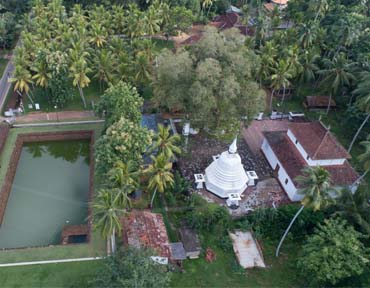
description not found
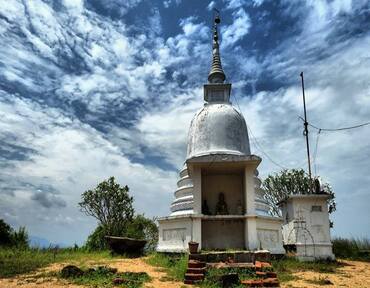
Pahurukanda temple is an ancient temple with a vibrant history. According to the historians, King Manabharana who got defeated in the fight with Wikramabhahu fled to Pasyodunrata with his brothers Kithsirimegha and Sri Wallabha. And got protection there. It is said fortress Manabharana was also at this place. This is a natural fortress and its summit is surrounded with a stone Wall. As such it is called Paurukanda. Recently footprint of Lord Buddha had been hewn at the summit of the hill. And it is called Piunchi Sripada as well.
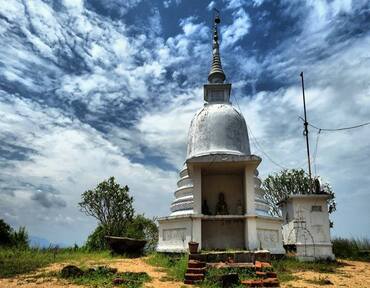
Ancient remains of great civilizations always shrouded with greatest stories. Sri Lankan monuments are no different from the norms of such remains, always attributing to the folklore of the community. One of such monument that has a great historical value and is shrouded by the folklore is Rankoth Viharaya in Panadura. According to the legend of the temple, it was erected upon the soils of the land that proven anyone can triumph over the adversaries, - a tale of a cobra being attracted by an army of frogs on the land and later the landlord decided to changed into a temple land. The inception and construction of the temple has no great centuries due to its inception on past two centuries. First half of the centuries passed the temple was called Galwala or Galkanda Viharaya, but with a addition to the temple – the gold pinnacle, the temple was named after Golden-Pinnacle Temple or also known as the Rankoth Viharaya. Another folklore surrounded and proven true, about the Viharaya is the great debate known as Panadurawadaya was held in this temple. The great debate is over the teachings of Christianity and Buddhism with a overwhelmed victory favors to Buddhism, thus becoming the premier educational center for Buddhist teachings. In architecture’s point of view the image house is the prominent feature of the temple, consisting with two parts the inner shrine and the walled ambulatory area. The walls and the ceiling of the ambulatory area are filled with paintings of Jathaka Katha, the depiction of hell, the life story of Lord Buddha, amongst them the 'Maara Parajaya' – the defeat or taming of the devil, the Lord Buddha cremation ceremony, the distribution of the relics are the best and most infamous.
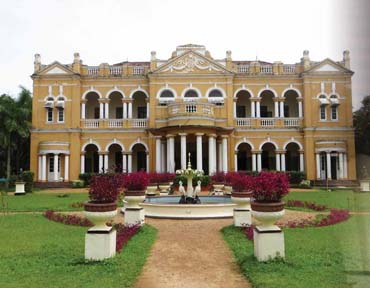
Richmond Castle, built at the turn of the century in Kalutara, is considered one of the most spectacular architectural works of the period. It was the property of a wealthy landowner turned philanthropist, Padikara Mudali Nanayakkara Rajawasala Appuhamilage Don Arthur de Silva Wijesinghe Siriwardena. The mansion stands majestically at top of a hill, on a 42 acre estate beside the Kalutara-Palatota Road. Once a circuit bungalow for high ranking officers of the British administrative service, today it is a popular tourist attraction, and serves as an educational centre for less privileged children of Kalutara and the vicinity.
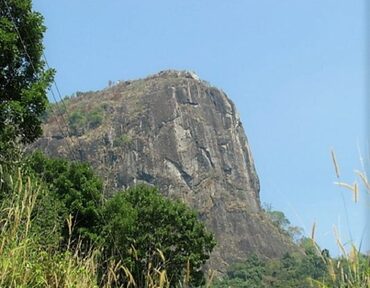
Nestle on the boarder of the Gampaha and the Kegalle districts, the Asmadala cave and the mountain range have the best impression on the people nearby areas as well as visitors of the area to enjoy or the people pass in visiting the area or the tourists who passing through the area. The Asmadala mount area houses cave systems that dates back to the pre-historical with the evidences of people living there at that era proven by some symbolic arts in the caves. Currently Asmadala Mount area houses many flora and fauna yet still survives near the extremely well used road system.
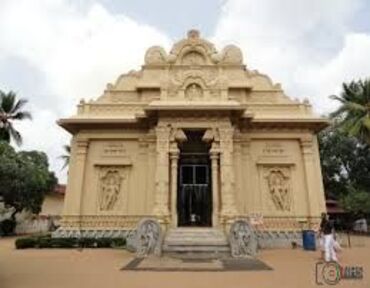
Bellanwila Rajamaha Viharaya is a Buddhist temple located in Bellanwila, Colombo District, Sri Lanka. The temple is famous for its sacred Bodhi tree, which is believed to be one of the 32 saplings that sprang from the sacred Bodhi tree at Anuradhapura planted in the 3rd century B.C. standing nearly over 2 millenniums. This ancient tree holds immense significance, and there's a cherished belief that a child who walks under its shade will never fail in life. Bellanwila Rajamaha Viharaya attracts hundreds of devotees daily and hosts the annual Esala Perehera festival. This vibrant procession usually takes place in the month of August or September.
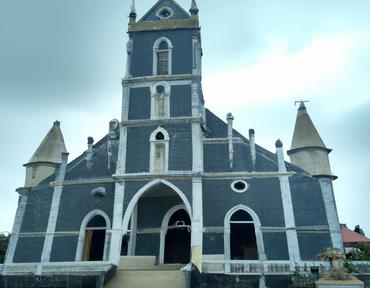
Our Lady's Church was established in 1820 by the Chetti community of Colombo and renovated in 2009. It is located at 13 New Chetty Street, Colombo. The name Our Lady of Sorrows comes from the Latin translation of Mater Dolorosa. In 1990, the Archbishop of Colombo announced it as the New Chetty Street Church for the Kochchikade parishioners. There are about 2000 Catholic families in this parish.
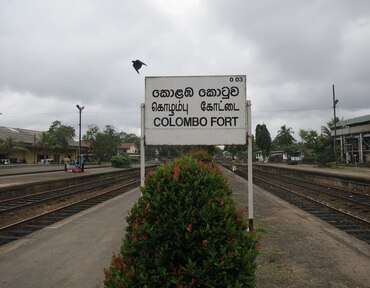
Fort railway station is a major rail hub in Colombo, Sri Lanka. The station is served by Sri Lanka Railways, with many inter-city and commuter trains entering each day. Fort Station is the main rail gateway to central Colombo; it is the terminus of most intercity trains in the country. Fort Station was opened in 1917, as a new central station for Colombo. This has been constructed similar to Manchester Victoria station. The station was built on land reclaimed from the Beira Lake. Maradana Railway Station is a major rail hub in Colombo, Sri Lanka. The station is served by Sri Lanka Railways, with many inter-city and commuter trains entering each day. It is the terminus of several intercity trains. When the railways first opened in Ceylon (Sri Lanka) in 1864, trains terminated at Colombo Terminus Station, a now-retired station near Maradana. In 1906, a project was launched to reorganise the railway within the Colombo area. Colombo Terminus Station was closed and replaced by the new Maradana Station
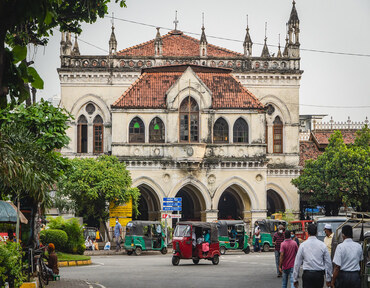
Colombo is the dream city where modernizationmeets the history and in return historical heritage embrace the new era with open arms. Most of the architectural evidences of past moved into do such where the proofs are happen to be very vibrant and ancient administrative building complexes in the Colombo City. They not only standing proudly to showcase the ancient history of Sri Lanka, they depicts a golden era under the Colonial monarchy. Among such building complexes, the Old Colombo Kachcheri is one the administrative buildings bestowed by the Such Colonial Era. Colombo Kachcheri is of Dutch Architecture, is one of the administrative building, a principal government complex as located in Colombo was established in the 18th century by the Dutch as a housing complex of Dutch dignitaries. By proving its architectural wonder, there is a painting of the housing complex in Rijksmuseum in Amsterdam illustrating this administration giant’s history.
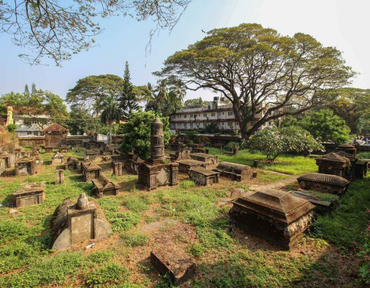
description not found
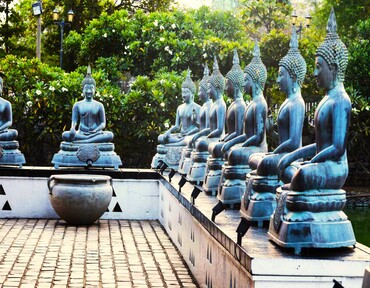
Gangaramaya is one of the oldest Buddhist temples in Colombo, started by the famous scholar monk Hikkaduwe Sri Sumangala Nayaka Thera in the late 19th Century. This Buddhist temple includes several imposing buildings and is situated not far from the placid waters of Beira Lake on a plot of land that was originally a small hermitage on a piece of marshy land. It has the main features of a Vihara (temple), the Cetiya (Pagada) the Bodhitree, the Vihara Mandiraya, the Seema malaka (assembly hall for monks) and the Relic Chamber. In addition, a museum, a library, a residential hall, a three storeyed Pirivena, educational halls and an alms hall are also on the premises
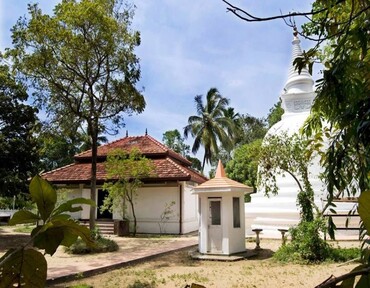
description not found
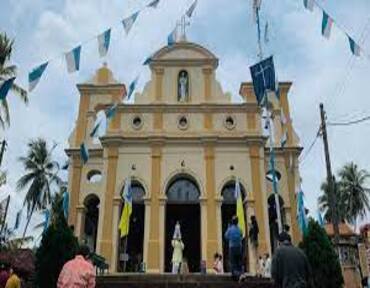
Baptism Church Hanwella is one of the oldest churches in Colombo dating back to 1820 and consider as the first ever baptism Church Sri Lanka had. Nestled in Hanwella, Colombo the Hanwella church has the reputation of conducting the baptism at that time that seemed to embrace the Lord.
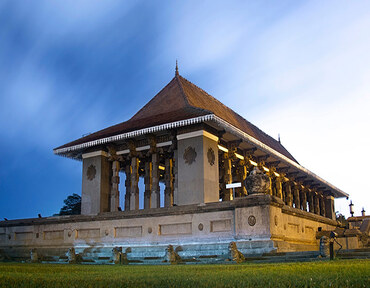
The Arcade Independence Square is a shopping complex in the city of Colombo in Sri Lanka, housed in a group of renovated buildings including the former Jawatta Lunatic Asylum (later known as the Auditor General's building) and the former Western Provincial Council Building. It was built as a part of the Independence Square Redevelopment programme initiated by the Sri Lankan Government. The building was constructed in 1889 at a cost of Rs 450,000. In 2012, the Urban Development Authority commenced the renovation of the buildings and special care was taken to preserve their original architectural features whilst adding modern technological features and amenitie
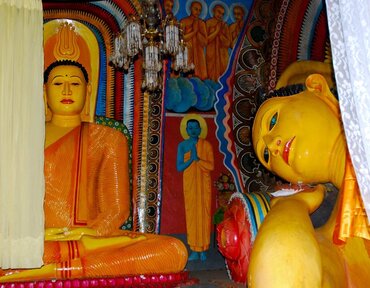
description not found
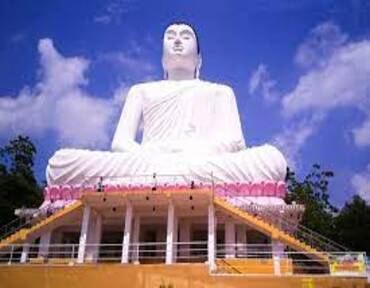
Korathota Raja Maha Viharaya, an ancient Buddhist temple located in Kaduwela, Colombo District, Sri Lanka, holds a rich historical significance. The focal points of Korathota Rajamaha Viharaya are its cave temples, which are hewn into the natural rock formations. These caves served as places of meditation, worship, and shelter for monks.The temple complex also includes a stupa, image houses, and other structures.Visitors can explore the serene surroundings, admire ancient art, and learn about the temple's cultural heritage.
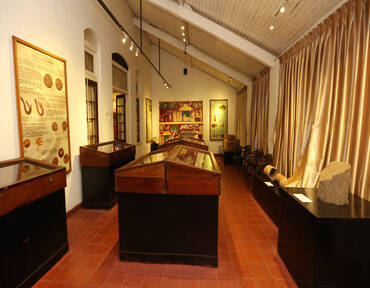
The Kotte Museum** (Sinhala: කෝට්ටේ කෞතුකාගාරය) is an archaeological museum located in Sri Jayawardenepura Kotte, Sri Lanka. Situated at the Bangala junction in Ethul Kotte, along the Borella-Pitakotte main road, this museum serves as the regional museum for the Western Province. It is maintained by the Archaeological Department of Sri Lanka. The museum was initially established in 1992 as the E. W. Perera Memorial Museumin Ihala Walawwa, the former residence of E. W. Perera, a prominent figure in the Sri Lankan independence movement. It opened to the public in 1995, The museum building features five exhibition rooms, showcasing a diverse collection of archaeological antiquities recovered from Kotte and its surrounding area. These artifacts include regional flags, clothing, statues, coins, swords, knives, guns, weapons, pottery, maps, and items.associated with E. W. Perera, as well as donations from Douglas Ranasinghe.
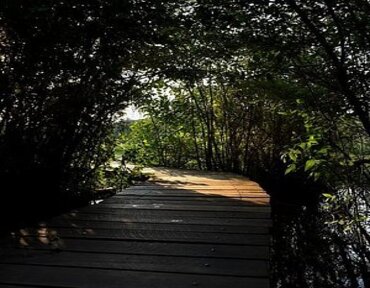
In the most urbanized district of Sri Lanka, in the heart of the city preserved with the natural environment and its potent gifts, the Kotte Rampart is truly a national treasure that exhibits the commitment of the citizens and interested and responsible parties in preserving the natural endowments for the future generations. As a wetland in the middle of Sri Jayawardhanapura Kotte the Administrative Capital, the Kotte Rampart Wetland Park has lush vegetation with commendablelly preserved biodiversity, spreading across more than 18 hectares from the 1000 hectares forest sanctuary as declared by the Wildlife Conservation in 1984.
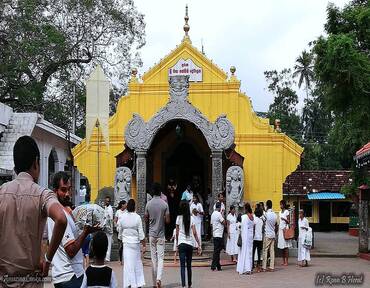
Nawagamuwa Pattini Devalaya is a historic temple situated in Nawagamuwa, Colombo District, Sri Lanka. The Archaeological Department has declared the Devalaya as a protected monument due to its importance in historical, architectural, and anthropological facets. It is a Buddhist temple primarily dedicated to all the gods. According to legend, King Gajabahu I (114−136) brought the ‘Pattini anklet’ from India after a victorious return with 12,000 prisoners. He built the Devalaya at the spot where he rested during his return to Anuradhapura. Another version suggests that Goddess Pattini arrived from India with 12,000 devotees from 16 castes and settled in this area. Some attribute the temple's origin to Neelaperumal Pandaram, who came from Kerala. Verifiable historical evidence about the Devalaya emerged during the Kotte period. Excavations have revealed building materials, wells, Dutch coins, and iron implements from the Middle Ages. Notable events occurred during the Kotte Period, including the inauguration of Hewagam Korale by King Rajasinha I and King Mayadunne's vow before going to war with the Portuguese in Colombo Fort.
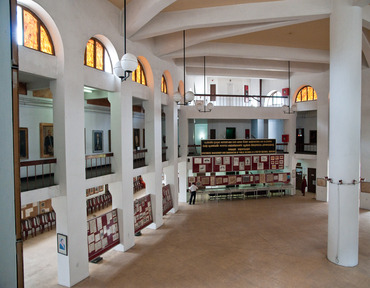
The government department in Sri Lanka that houses the government's historical records is called the Department of National Archives. Near Independence Square in Colombo, on Reid Avenue, is where the National Archives headquarters are located. National Archives Law No. 48 of 1973, was renamed Department of National Archives. The current department operates under the provisions of the National Archives Law No. 48 of 1973.
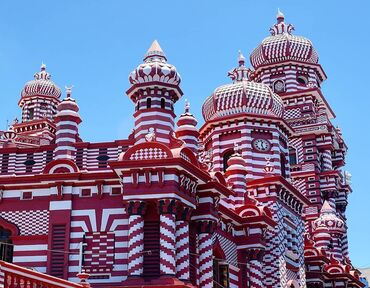
Spiritual tranquility is a rare phenomenon in the busy streets of Colombo city, yet standing tall spreading the soothing praying sounds and spiritual tranquility is the architectural wonder of Islamic religion the Red Musjid. Built in early 20th century, the red Musjid is one of the finest arts in Colombo with theme in red and white stripped painting to its architectural designs. As the mixture of Indu-saracenic, Indu-saracenic, Indian, gothic and neo-classics well as the British Colonial architectural styles, the red Musjid has various names denoted to its beauty; such as , Rathu Palli, Samman Kottu Palli, Red Mosque. The inspiration for this religious architecture was the pomegranate fruit. With the pomegranate as its base shape, the domestic, ceilings, harem windows the wooden carvings of pillars, the bright chandelier eventuate the shrine's profile.
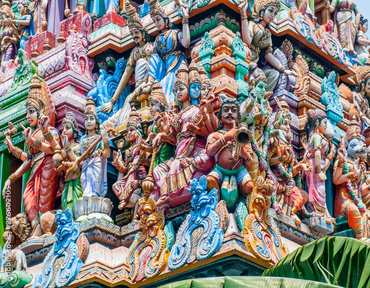
description not found
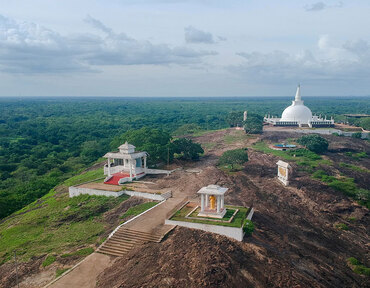
description not found
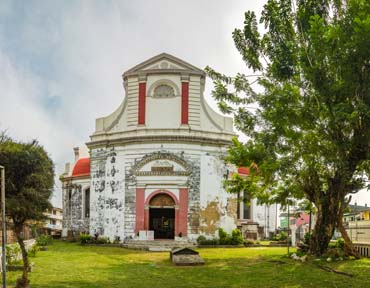
Wolvendaal Church (Wolvendaalse Kerk) is a remarkable Dutch Colonial-era building located in the Pettah neighborhood of Colombo. In 1736, Governor Gustaaf Willem van Imhoff sought approval from the Dutch East India Company (VOC) to demolish the existing church (Kasteel Kerk) within Colombo Fort and construct a new one on the same site. The VOC initially refused, but Governor Julius Valentyn Stein van Gollenesse resolved the impasse. The new church was erected beyond the city walls in an area known as Wolvendaal (Wolf's Dale or Wolf's Valley). The site was chosen for its commanding views across the town, proximity to the entrance, and historical significance. Constructed in the Doric style, the church forms a Greek cross with walls nearly 1.5 meters (five feet) thick. It is made of large kabok (clay ironstone) mixed with coral and lime plaster. The high roof resembles a dome and was originally arched with brick, covered in blue Bangor slate roof tiles. Atop the dome stood a brazen lion symbolizing the seven united provinces of the Dutch Republic. Unfortunately, in 1856, lightning destroyed the lion and damaged the dome. Completed on March 6, 1757, the Wolvendaal Church remains one of the oldest Protestant churches still in use in Sri Lanka.
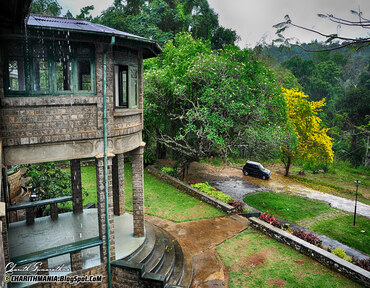
Gal Bangalawa is one of the Guest houses in Sri Lanka that was constructed in British Colonial Era. As the guest house that provide the accommodations for the superintendent of estates nearby the gal Bangalawa. Nestle amongst the tea and rubber estates, the Gal Bangalawa was operated as a hotel in once upon a time. The Gal Bangalawa is located near the boarder of the Western Province and the Sabaragamu Province facing the Mountains terrains of the Sabaragamu, and facing the Wak Oya and near the Labugama Reservation. As of currently, the Gal Bangalawa is not servicing anyone.
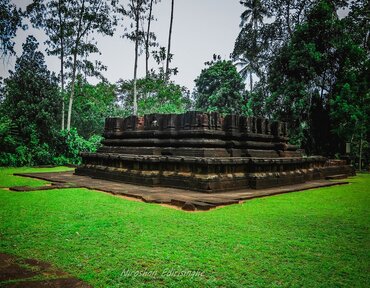
Barandi Kovil also known as Berendi Kovil, Barandi Koovila, or nicknamed Brandy Kovil is a significant historical site in Sri Lanka. The Barandi Kovil is the last surviving monument from the Seethawake era. It stands as a magnificent Hindu temple in Kegalle. Despite being partially ruined during the colonial period, the temple showcases intricate stone work, including pillars, railings, and elegant carvings. Established during the reign of King Seethawaka Rajasinghe, the Barandi Kovil was dedicated to God Bhairava. It remains a testament to the rich history and cultural heritage of Sri Lanka's past kingdoms.
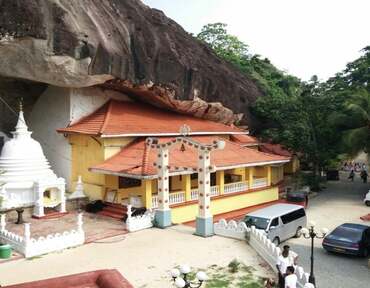
Ancient geographical milestones ate the most veritable sources of historical knowledge and wonders of Sri Lanka. Amongst such milestones, the Maniyagama Rajamaha Viharaya holds an immeasurable amount of artistic, architectural, historical and geographical value. In the historical folklore the Maniyagama was a linking junction of ancient Anuradhapura Kingdom and the Western region of Sri Lanka, and even the geographical deposition aside, the Maniyagama Rajamaha Viharaya itself is the most significant in its inception by King Valagamba and the later years the renovation by King Keerthi Sri Rajasinghe. Historically it played a pivotal role in not just as slinking road junction, but also as a strategic military stronghold, proven by the role this destination played in the battles between Seethawaka and Kotte Kingdoms as well as the Kingdoms resistance against Portuguese. Above all these historical values, the natural and Environmental features of the destination had added breathtaking attraction via curved roads, forest ceilings, outside and out of reach from unending urbanization, thus maintaining the nature value bestowed on the land to great extent. The architectural designs only added more prominent features to the land giving the mysterious quality people seek in a destination that has been a central point of many wars in the past. The Kandyan style roofing, long verandas, granite pillars, the makara thorana, the mural arts, ceiling, walls and shrine arts given the place exterior ambience that suitable for the destination.